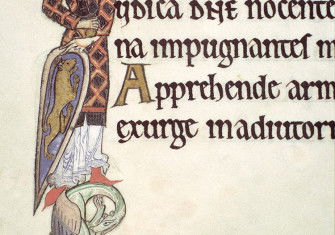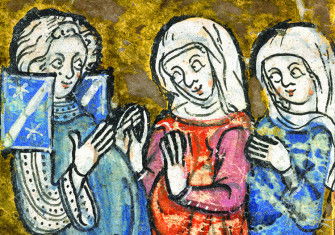The Search for Prester John
For five centuries the legend of a Christian priest king, in Asia or in Africa, sustained the hopes of Europeans in their struggle with Islam. Those who joined the search for Prester John were looking for a man who was not there.
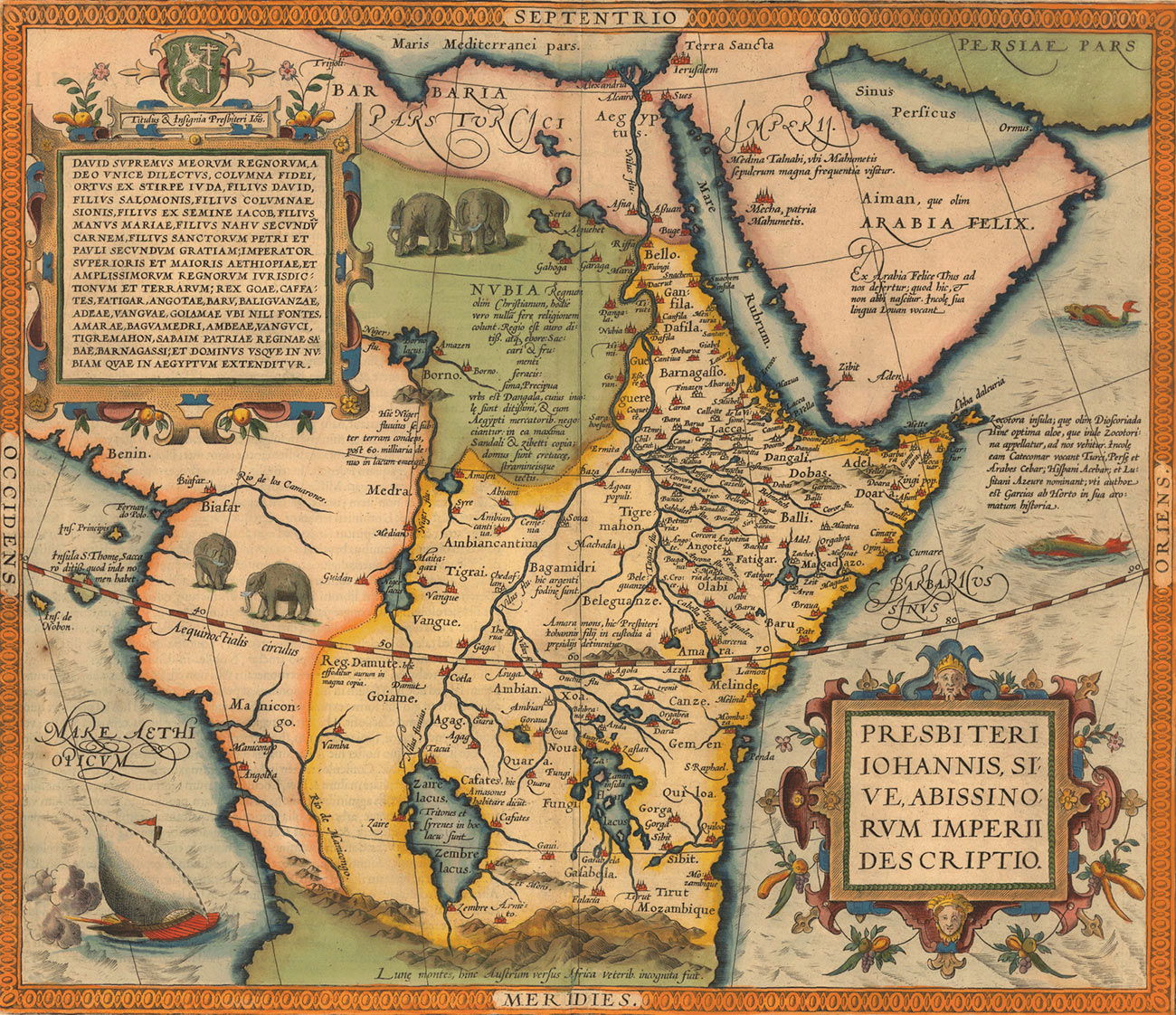
The 'Prester John map' by Abraham Ortelius, 1527-1598.
The history of Prester John is the history of a man who never existed. Medieval legend called him into being when it was felt that his presence would be of help in the struggle between Christian Europe and the Islamic world. His name was first recorded in 1145 and continued to appear from time to time up to the beginning of the 17th century. Each reference to Prester John – John the Priest – was compounded of two elements; on one side the European wish for the existence of a strong Christian power beyond the confines of Medieval Christendom; on the other, some historical event or process in a far corner of the earth, on the distorted news of which was based a concrete shape for this wish.
Originally the Priest King was heard of in Asia; later it became generally accepted that his kingdom lay in Africa. With the growth of geographical knowledge and the discovery of places in which Prester John was not to be found, the location of the Priest King moved to lesser known regions. The development of the legend makes a fascinating study; not only for the sake of its wealth of fabulous detail, but also because the belief in the existence of Prester John had a profound effect on the history of European exploration and discovery in Asia and Africa.
*
Many elements in the corpus of medieval mythology played their part in paving the way for the appearance of the Priest King. The legends of the exploits in Asia of Alexander the Great contained many details of the wonders which could be expected in the Orient. The associated story of Gog and Magog and of the wall which Alexander built to prevent these malevolent people from devastating the civilised world gave strength to the idea that the safety of Christendom might depend upon some force outside its borders.
The story of the Magi, the three wise Kings of the East who brought gifts to the infant Jesus, suggested that there might be as-yet undiscovered Eastern rulers who were true friends to the Christian faith. The Jewish belief in the existence of the Lost Ten Tribes of Israel in some part of furthest Asia, perhaps beyond the wall of Gog and Magog, strengthened this concept of salvation from without by its implication that the long-awaited Jewish Messiah might arise from among these excluded tribes. Finally, there was the fact of the early spread of Christianity to remote corners of Asia, which had given rise to legends concerning the missions of the Apostle St Thomas to India and China.
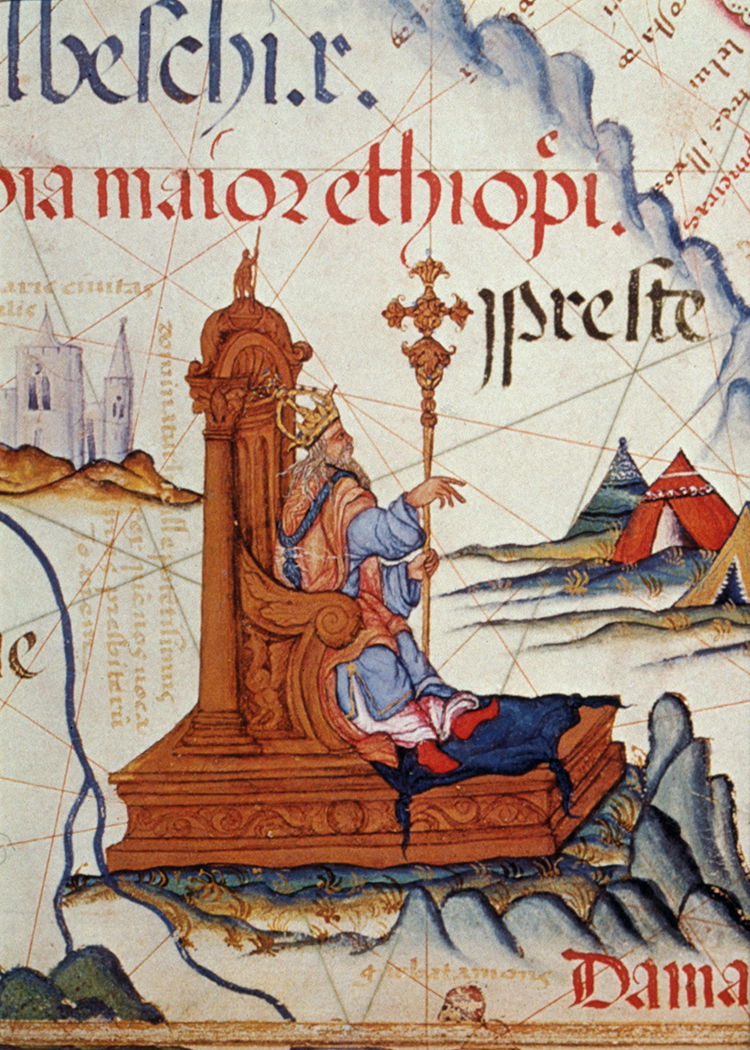
The Christian communities of the Far East, though generally schismatic or heretical, never lost touch with the Christians of Europe. The Holy Land provided a meeting place for Christians from all over the world. On occasions, representatives of remote churches found their way to Rome. It is probable that such a visit, that of the Patriarch John of the Indian Church of St Thomas to Rome in about 1122, might have provided the immediate basis of the legend of Prester John, the Christian Priest King in the East.
Patriarch John did his best to impress his Roman brothers in Christ. He told such fabulous tales that Pope Calixtus II is said to have asked him to keep silent, and only permitted him to continue his account when the good Patriarch took an oath on the Gospels that all he said was true. He told of his wonderful capital, Ulna, so vast in area that it took four days to walk round its walls. He described the Phison, one of the rivers of Paradise, which watered his land. He gave an account of the miraculous body of St Thomas which lay preserved at Ulna and was the chief glory of his see. He gave the impression that he was the temporal as well as the spiritual ruler of this Indian state. He might well have suggested that he could be a most valuable ally to Christendom in time of need.
In 1145, when the Prester first appears, need for such an ally was all too apparent. The capture of Edessa by the Seljuk general Zengi in 1144 marked the turning-point in the history of the Crusades. The conquests of the First Crusade were gravely endangered by a revival of Islamic power. The news of the fall of Edessa was brought to Pope Eugenius III from the Levant by Hugh, Bishop of Jabala in Syria. The meeting between bishop and pope, at Viterbo in the autumn of 1145, was attended by the German chronicler Otto of Freisingen, who took down what was said.
To the Bishop the gloomy news of the fall of Edessa was balanced by the prospect of help for the Crusaders from an unsuspected direction. The Bishop had heard that not long ago 'one John, king and priest, who dwells in the extreme Orient beyond Persia and Armenia, and is with his people a Christian, but a Nestorian', had defeated the Persians and captured their capital. After this victory John set out with his army to come to the aid of the Crusaders, but was unable to get his troops across the Tigris.
He marched north up the river in hopes of finding a place where the water froze over in winter. In this he was disappointed and after waiting some time for a frost which never came, and losing many of his men owing to the unfavourable climate, he was obliged to turn homewards.
This Prester John, the Bishop concluded,
was said to be of the ancient race of those Magi who were mentioned in the Gospel, and to rule the same nations as they did, and to have such glory and wealth that he used only an emerald sceptre. It was from his being fired by the example of his fathers, who came to adore Christ in his cradle, that he was proposing to go to Jerusalem when he was prevented by the cause already alleged.
There is a certain basis of contemporary fact behind this odd story. In 1141 the Seljuk Sultan Sinjar, in one of the decisive battles in the history of Central Asia, was defeated at Katwan near Samarkand by a Mongol people, the Kara Kitai, who had recently migrated to Central Asia from their previous home in north China. The Kara, or ‘black’ Kitai were a branch of the Kitans who had ruled over north China from 936 until 1122, when they had been dispossessed by another Mongolian group, the Kin.
One branch remained under Kin domination; another branch set out on a migration which, in a few years, brought it to the borders of the Seljuk empire. It is from the name of these people, the Kitai, that the name which Marco Polo gave to China, Cathay, is derived. Their defeat of Sinjar marked the end of Seljuk expansion and, in the Levant, paved the way for the rise of Saladin. To the Crusaders of the time, however, it must have seemed as if some unknown ally was fighting on their side against their chief enemy, the Seljuks.
The Prester John of this story is the emperor of the Kara Kitai, the Gurkhan, Yeliu Tashi by name. Yeliu Tashi was certainly no Christian; if anything, he was Buddhist. Attempts have been made to derive the name John from the title Gurkhan; but there is no need for this. To the bishop it sufficed that the victor over the Seljuks was no Muslim. The name John probably came from a memory of the visit of the Patriarch John of India to Rome in 1122.
*
The victories of Prester John failed to relieve the position of the Crusaders. His armies did not appear. Without him the Second Crusade ended miserably. But the Priest King’s failure to bring succour to his co-religionists did not weaken their faith in his existence. Any lingering doubts, moreover, must have been dispelled in 1165, when the Byzantine Emperor Manuel Comnenos, the Holy Roman Emperor Frederick Barbarossa and the Pope all received a letter from the fabulous Prester John.
The letter was a forgery. It may have been intended as a tract on the benefits of priestly government and hence as a useful support to the Papacy in relation to the empire. It may have been devised as propaganda for a Third Crusade. It enjoyed a very wide circulation and its popularity was such that it continued to be copied, with frequent topical interpolations, throughout the rest of the Middle Ages. More than 100 manuscript copies of the letter, in several languages, are known to exist.
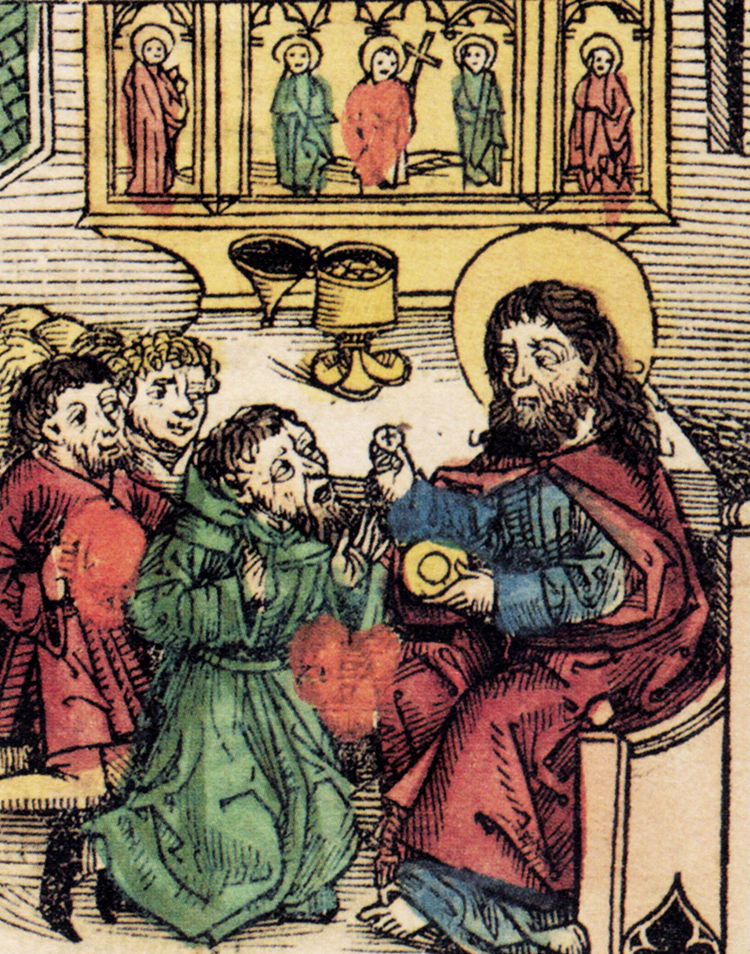
The bulk of the letter was devoted to describing the magnificence of the kingdom of Prester John, with a wealth of detail derived from such diverse sources as the various Alexander legends and the story of the city of the Apostle Thomas which Patriarch John told the pope in 1122. The location of the Prester’s kingdom was in India. He worshipped at the Church of St Thomas. He informed the leaders of Europe that ‘We have determined to visit the sepulchre of our Lord with a very large army, in accordance with the glory of our majesty, to humble and chastise the enemies of the cross of Christ and to exalt His blessed name.’
In 1177 Pope Alexander III replied with a long letter to Prester John. The immediate occasion for this was a meeting by the pope’s doctor, one Philip, with some representative of the Priest King while on pilgrimage to the Holy Land. According to Philip, Prester John, a Nestorian, wished to embrace the Roman faith and to build a church in Rome and an altar in the Church of the Holy Sepulchre at Jerusalem. When the pope heard this, he promptly sent Philip as bearer of a friendly letter to the Prester. Where Philip went, and what became of the letter, is not recorded. It is possible that Philip had met in Jerusalem pilgrims from one of the remoter Christian communities of Central Asia and interpreted what they told him in the light of his preconceptions about Prester John.
Doubtless, the pope, who had just emerged victorious from a long struggle with Frederick Barbarossa, saw no harm in letting it be known that he had established relations with this fabulous Christian power of the East. The episode certainly received much publicity; various versions of the pope’s letter are given in several English chronicles of the 13th century.
*
When news of Prester John next emerged from the East, in about 1221, the need for outside assistance for the Crusaders was even greater than it had been in 1145. In 1187 Jerusalem fell to Saladin. The Third Crusade, in which Richard Coeur de Lion won such fame, failed to recapture the Holy City.
The Fourth Crusade, instead of bringing help to Palestine, sacked the Christian city of Constantinople and seriously weakened the remaining vigour of the Byzantine Empire. The Children’s Crusade of 1212 ended in tragedy. The army of the Fifth Crusade, which landed in Egypt in 1218, sorely needed some deus ex machina to bring to it greater success than that met with by its predecessors. Hope for such help was suggested in the letter which Jacques de Vitry, Bishop of Ptolemais, wrote to Pope Honorius III in 1221. He reported that David, King of India and descendant of Prester John, had attacked the infidel with three armies and that one of these armies was at that moment within 15 days' march of Antioch. Here at last, he wrote, was the long-awaited ‘Hammer of the Infidel'.
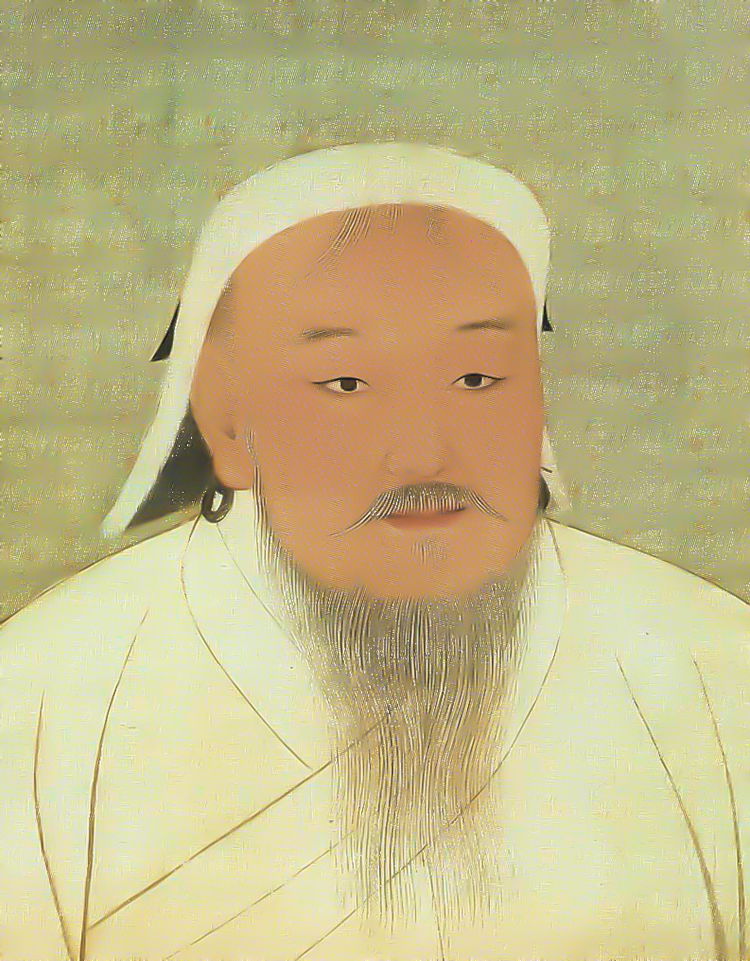
There is little difficulty in detecting the Central Asian origin of this story. In 1218 the Mongols, under Chinggis Khan, overthrew the Kara Kitai empire which had in about 1211 passed under the control of an adventurer of the Naiman tribe of Mongols. By 1220 Chinggis Khan had gone on to destroy the empire of Khwarezm, a powerful Islamic state which had been founded towards the end of the 12th century in the land between the Rivers Oxus and Jaxartes, and which extended its influence over much of Persia. In 1221 a flying column of Mongol troops dashed into Persia, nearly captured Baghdad, and penetrated far into the Caucasus. David, of the line of Prester John, could only be Chinggis Khan.
Today, the picture of Chinggis Khan in the role of saviour of Christendom seems absurd. In the early 13th century it seemed reasonable enough. It was well known that several nomadic tribes in Central Asia had embraced Christianity. Even if the Mongol Khans were not of the faith, this was no reason why they should not be converted into genuine Prester Johns.
Pope Innocent IV, who was elected in 1243, certainly thought along these lines. He had been told that ‘the Mongols worship one God, and were not without some religious beliefs'. The Mongols, moreover, ‘say they have Saint John the Baptist for Chief'. So reported a Russian bishop who had fled to France to escape the advancing Mongol hordes. Innocent resolved to try to establish some sort of relations with the Mongols.
In 1245 Friar John of Plano Carpini was sent by the pope to carry letters to the Mongol Khan, and there can be little doubt that among his instructions was a request to clear up the mystery of Prester John. His conclusion was that the Mongols were not the people of the Priest King; but his information about who Prester John was is not so definite and varies according to different versions of the narrative which he wrote on his return from his mission.
Carpini made a passing reference to the Black Cathayans, who, he claimed, were Christian in all but name. They had recently been conquered by the Mongols. But the Prester was not among these people; he had moved to the adjacent land of India Major, if one is permitted to interpret ‘the black Saracens who are also called Ethiopians’ as a reference to the Kara, or 'Black', Kitai. In the 13th century, it is worth noting, the term Ethiopia was so imprecise as not to justify its location in Africa without supporting evidence which, in this case, is not present.
Prester John, Carpini wrote, lived beside these ‘black Saracens'. Chinggis Khan tried to invade his land but was repelled by the Prester, who sent against the invading troops what sounds very much like explosive charges fastened to the backs of horses and set off at the right moment by suicide soldiers. But another version of Carpini's account told a different story.
Prester John and his son David were described as kings of India to whom the Mongols used to pay tribute. Chinggis Khan, however, put an end to this practice by invading the land of Prester John and defeating King David. The victorious Prester is in the tradition of the stories of 1145 and 1221; the defeated Prester fits in with the travellers’ tales of the second half of the 13th century.
*
Just as the Pope was interested in finding Christian allies in the East, so was the Crusading French King, Louis IX. Louis had met Carpini after his return and had talked with other envoys whom the pope had sent to various Mongol khans.
In 1253, after his unfortunate Egyptian Crusade, Louis sent his own envoy to the Mongols, Friar William of Rubruck, and once more it is most probable that the ambassador to the Mongols was instructed to keep on the look-out for traces of Prester John. These Rubruck had no difficulty in finding, but they were hardly of the type which Louis would have hoped for.
This was Rubruck’s story: in about 1098 there lived in Central Asia a certain Con Khan, chief of the Black Cathayans. When Con died the Black Cathayans came under the rule of a certain Naiman chief, a Nestorian Christian known as John. John had a brother, Unc, who ruled over the Kerait people in the neighbourhood of Karakorum, the Mongol capital.
The Keraits were also Nestorians, but Unc abandoned the religion of his people and became an idolater. When King John died, Unc combined the rule of the Black Cathayans with that of the Kerait. With this increase in power Unc’s ambition became boundless and soon he attacked the neighbouring tribe of the Mongols and defeated it.
Aroused by this disaster, the Mongols made Chinggis Khan their leader and under his guidance soon avenged their defeat by overwhelming in battle the forces of Unc and forcing him to take refuge in Cathay. As in the other Prester John stories to this date, Rubruck’s story is not without historical foundation. Con Khan is clearly the Gurkhan of the Kara Kitai. In about 1211 this position was usurped by the Naiman adventurer Kutchluk, who is clearly the model for Rubruck’s King John, though there is no evidence that Kutchluk or the Naiman were Christians at the time.
Unc is as easily identified. He is Toghrul, chief of the Kerait tribe. Toghrul had at one time been the patron of the young Chinggis and had later become his enemy. The defeat of Toghrul by Chinggis in 1203 marked the virtual completion of Chinggis’ unification of the tribes of Mongolia.
A close examination of the Kara Kitai, such as Rubruck was in a position to make, showed that neither were they any longer a power worthy of notice nor had they ever been Christians. The Keraits, while their political importance had greatly declined after the defeat of Toghrul, were still the most important Christian tribe in Central Asia.
The conversion of the Keraits took place in about 1009 in miraculous circumstances which were widely reported at the time. The king of the Keraits, so the story went, lost his way when out hunting. A blizzard overtook him and he was convinced his hour had come, when a saint came to him in a vision and said: ‘If you believe in Christ, I will lead you in the right direction and you will not die here.’
The king got home safely. He remembered the vision and embraced the Christian faith along with his tribe, some 200,000 souls. The Keraits were clearly well suited for the role of the people of Prester John. It is probable that the story of their conversion played its part in the development of the legend. Rubruck’s narrative paves the way for the transfer of the title of Prester John from the Kara Kitai to the Keraits.
*
By the time Marco Polo set out on his travels the identification of Prester John with the ruler of the Keraits had become generally accepted. Polo’s account of the Prester, while similar to that of Rubruck, makes no further mention of the Kara Kitai. Like Rubruck, Marco Polo is not greatly impressed with the Prester’s sanctity. He attributes the defeat of Prester John by Chinggis in great part to the Priest King’s pride and lack of tact in dealing with the Mongols.
When Chinggis sends ambassadors to John to seek the Prester’s daughter as a wife for the Mongol ruler, he receives an insulting reply. War follows in which Prester John is defeated and killed. On the eve of the battle Christian astrologers prophesy that Chinggis will win and he is so pleased with this correct prediction that from that day he always treats Christians ‘with great respect’ and considers them to be ‘men of truth for ever after'.
The general trend of the Prester John legend in the 13th century was towards a discrediting of the Priest King in favour of the Mongols, his conquerors, on whose shoulders, it seemed, had fallen the mantle of the saviours of Christendom. There was some basis to this concept. Several important Mongol officials were Christian; and several of the clans which had united under the banner of Chinggis Khan were of this faith.
When, in the years after 1239, it seemed as if the Mongols, who had conquered Russia, Persia, parts of Asia Minor and the Levant, and had penetrated for a brief moment into Poland and Hungary, were destined to play a dominant part in European politics, the idea of a Christian Mongol empire became most attractive. The value of a Mongol alliance was evident. A Byzantine emperor did not shrink from giving his daughter in marriage to a khan of the Mongol Golden Horde in Russia. Frankish princes in the Levant gladly allied themselves to Hulegu.
This Mongol satrap (governer), grandson of Chinggis Khan, destroyer of the Abbasid Caliphate and founder of the Khan dynasty of Persia, played a part in the Levant in the second half of the 13th century not unlike that which it had been hoped at one time Prester John would play. For a while it seemed as if Hulegu would crush the power of Egypt, whose leader, Baibars, was then the mainstay of Islamic power in the Levant. It even seemed possible that Hulegu would become a Christian; his wife was already of that faith.
In these circumstances Prester John dwindled in importance. Marco Polo found a person whom he considered to be descended from Prester John, George, who still ruled in the province of Tenduc, in the great loop of the Yellow River, where Polo had located the priest’s realm. George’s family married into that of the Great Khan. He still held land, but only as a Mongol feudatory, and he did not hold ‘anything like the whole of what Prester John once possessed'. It was clear that the Asiatic Prester John had had his day.
*
By the beginning of the 14th century the idea of help for Christendom from the Orient had suffered rude disillusionment. The followers of Hulegu, of whom so much had once been hoped, embraced Islam, as did the Mongols in Russia. The centre of Crusading interest, moreover, had been shifting from the Levant to Egypt and North Africa. It became fixed when Acre, the last Frankish stronghold on the Levant mainland, fell to the Saracens in 1291. The next phase of the Crusade was to be the preparation for Portuguese expansion on to the coast of North Africa.
It was inevitable that the search for Prester John should be shifted to Africa. By the early 14th century his kingdom was being located in Abyssinia, where a Christian community had been in existence since the fourth century. Contact between Abyssinia and Europe had been severed by the Islamic conquests of the seventh century; but at the very moment when the Asiatic Prester John was being discredited by travellers like Friar Odoric, Abyssinian embassies began to reach the courts of Europe and Dominican missionaries were able to penetrate into central Africa. By the end of the 14th century few writers in Europe would have denied that Prester John was the ruler of Abyssinia.
Here, it was argued, he had retired when the Mongols had defeated him in Central Asia. And here he was still able to render valuable assistance to Christendom against the power of Islam in the Mediterranean. In his kingdom lay the source of the River Nile upon which the life of the most formidable Muslim power, Egypt, depended, and he had but to divert the course of this river to starve the Egyptians into submission.
That Prester John had not already done so, some writers argued, was solely because the priest King did not wish to have on his conscience the lives of the many Christians who lived in the Nile Delta. Other observers, less charitably, wrote that the Prester was dissuaded by a large Egyptian subsidy.
In this new role the Priest King was stripped of much of the fabulous and romantic quality bestowed upon him by the earlier versions of the legend. Even now, however, he had a part to play in the history of exploration, for it was partly in search of his kingdom, in the hope that he would prove an ally in a renewed Crusade, that the Portuguese Prince Henry the Navigator encouraged the series of journeys along the coast of West Africa which were to culminate in the epic voyage of Vasco da Gama and the discovery of the direct sea route to the Indies.
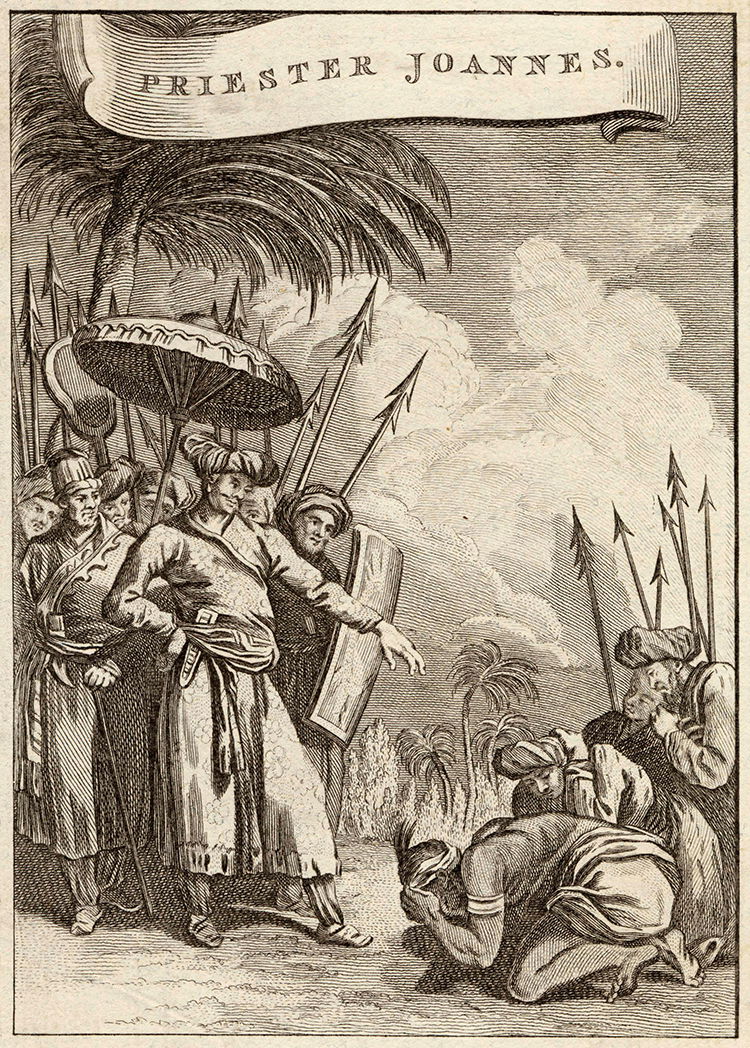
Long after Prince Henry’s death this search continued, until, in 1493, the Portuguese traveller Covilham, who had been sent out by his king for this purpose, reached Abyssinia and ended, as far as Portugal was concerned, the quest for Prester John. But the Priest King, it now transpired, was neither very wealthy nor very powerful. Far from being a source of strength against Islam, he stood in great need of Portuguese support to save his kingdom from Islamic conquest.
Throughout the 14th and 15th centuries a few writers and cartographers remained loyal to the Asiatic legend. The discovery that the Abyssinian Prester was but a faint shadow of the great potentate of the earliest versions of the legend may well have suggested that this African king was not, after all, the fabulous Prester John.
It is certain that the Jesuit mission which established itself at the court of the Mughal emperor Akbar at the end of the 16th century thought that the Priest King still ruled in Cathay, that mysterious land described by Marco Polo. It was only after 1603, when a member of that mission, one Benedict Goes, had been despatched to investigate this possibility and in so doing found that Cathay was one and the same as China, a land about which much had been learned during the course of the 16th century, that it was concluded that there remained no place on earth where the great Christian king might still reign.
*
The Portuguese continued to call the Negus of Abysinnia by the name of Prester John, and the rest of the world has followed suit. The name, however, became no more than a convenient title for a minor king. The legend of Prester John, like many other legends of the Middle Ages, fell before the relentless advance of modern geographical knowledge. And yet, in the development of that knowledge it had played a most significant part.
In its youth this legend encouraged the exploration of the land route between Europe and Central Asia and the Far East; in its middle age it assisted the discovery of the direct sea route to the Indies; even at the moment of its death it was still strong enough to lead to the identification of Cathay with the Chinese Empire.
This article originally appeared in the May 1957 issue of History Today under the title ‘Prester John’.



